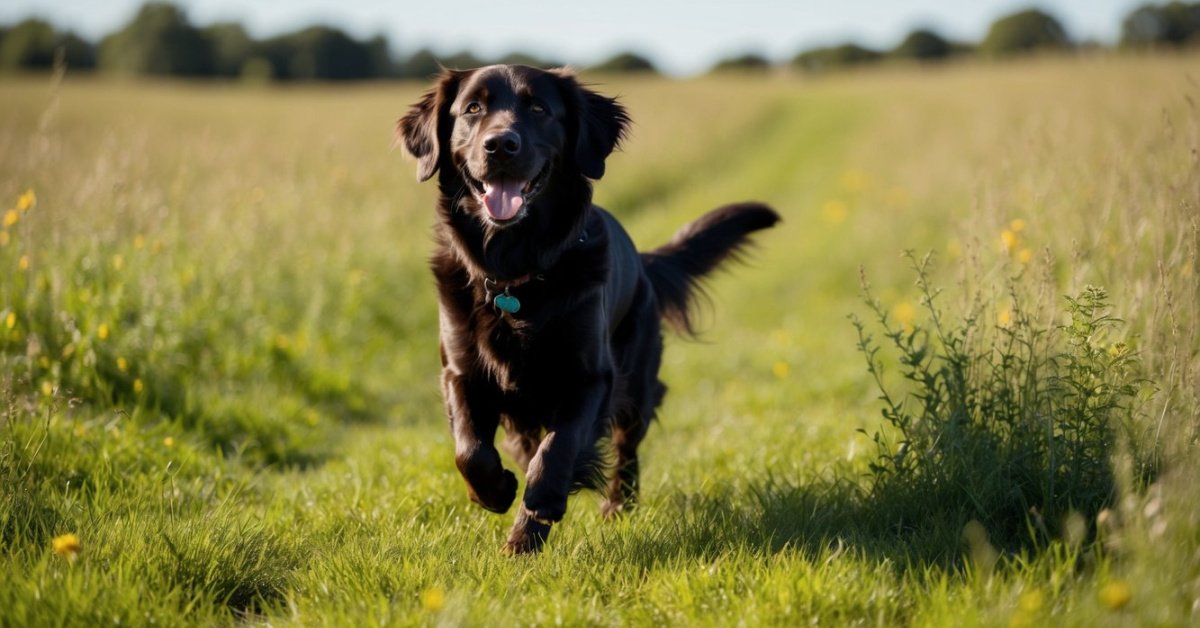Golden Retrievers are known for their friendly and energetic nature, which makes them fantastic companions. However, their exuberance can sometimes lead to overexcitement and anxiety in certain situations. If you’ve ever found yourself struggling to keep your furry friend calm during a thunderstorm or when guests arrive, you’re not alone.
Teaching your Golden Retriever to stay calm is not only beneficial for their well-being but also for yours. With a little patience and the right techniques, you can transform those moments of chaos into peaceful interactions. Let’s dive into some effective strategies that will help your pup embrace calmness and enjoy a more relaxed lifestyle.
Understanding Golden Retrievers
Golden Retrievers are known for their friendly disposition, intelligence, and energy. Understanding their traits helps me teach them techniques for staying calm.
Breed Traits and Temperament
Golden Retrievers typically exhibit loyalty, playfulness, and a high level of trainability. These dogs thrive on social interaction and enjoy being part of family activities. Their affectionate nature makes them great companions. However, their natural enthusiasm can sometimes lead to challenges, especially when they encounter new experiences. Recognizing their friendly temperament enables me to approach training with patience and love.
Common Behavioral Challenges
Golden Retrievers often struggle with overexcitement, especially during events like thunderstorms or when meeting new people. They may bark excessively, jump up, or exhibit anxious behaviors in unfamiliar environments. Such reactions stem from their eagerness to engage and please. Addressing these challenges involves consistent training, creating a calming environment, and reinforcing positive behavior. Understanding these common issues allows me to implement effective strategies tailored to my dog’s needs.
The Importance of Calmness
Calmness plays a crucial role in the well-being of Golden Retrievers. A serene environment not only benefits the dog but also enhances the owner’s experience.
Benefits of a Calm Dog
- Reduced Anxiety: A calm Golden Retriever experiences lower levels of stress, which leads to better overall health.
- Improved Behavior: Calmness reduces tendencies for excessive barking or jumping, resulting in peaceful interactions at home and in public.
- Enhanced Focus: A relaxed state allows for better concentration during training sessions, making learning new commands easier.
- Positive Interactions: Calm dogs initiate healthier relationships with both humans and other pets, promoting social harmony.
Impact on Training and Socialization
- Easier Training: Golden Retrievers that remain calm respond better to commands, leading to quicker and more effective training sessions.
- Greater Adaptability: Calmness helps dogs adjust to new environments and experiences, reducing the likelihood of fear-based reactions.
- Social Skills Development: A relaxed demeanor fosters better social interactions, enabling dogs to engage positively with other dogs and people.
- Lower Distraction: Trained calmness minimizes distractions, allowing Golden Retrievers to focus on their tasks or the owner’s instructions without being sidetracked.
Techniques for Teaching Calmness
I implement various techniques to help Golden Retrievers embrace calmness. These techniques focus on creating a serene environment and engaging in specific training exercises that foster relaxation.
Creating a Calm Environment
I prioritize a calm environment to set the stage for my Golden Retriever’s tranquility. I minimize loud noises, sudden movements, and other distractions. I provide a comfortable space with soft bedding and toys. I use soothing music or white noise to create a peaceful atmosphere. I also regulate the temperature to ensure it’s comfortable. When guests come over, I ask them to approach slowly, allowing my dog to acclimate to new people without overwhelming her. Consistency supports relaxation and reinforces calm behavior over time.
Training Exercises to Promote Calmness
I incorporate several training exercises that encourage calmness in my Golden Retriever.
- Mat Training: I teach my dog to settle on a mat. I reward her for lying down quietly. I gradually increase the duration, reinforcing calmness.
- Sit and Stay Commands: I practice “sit” and “stay” commands in low-distraction areas. I reward her for remaining still, gradually introducing distractions to strengthen her focus.
- Controlled Greetings: I practice calm greetings. I wait for her to sit before allowing her to greet guests or other dogs. This reinforces self-control.
- Focus Exercises: I teach her to make eye contact with me. I reward her for maintaining eye contact, helping her learn to concentrate and reduce impulsiveness.
- Gentle Leash Walking: I train her to walk calmly on a leash. I reward her for maintaining a loose leash during walks, discouraging pulling and excitement.
These techniques help my Golden Retriever develop better self-control, allowing her to enjoy a relaxed lifestyle.
Addressing Anxiety and Overexcitement
Addressing a Golden Retriever’s anxiety and overexcitement requires understanding their specific triggers and implementing effective coping strategies. By working on these aspects, I can help my dog remain calm in various situations.
Identifying Triggers
Identifying triggers is crucial for managing anxiety and overexcitement. Common triggers for Golden Retrievers include:
- Loud noises: Thunder, fireworks, or loud music often cause stress.
- New people: Excitement or anxiety can arise when guests arrive.
- Animal encounters: Seeing other dogs or animals can lead to overexcitement.
- Sudden changes: Changes in routine or environment may create anxiety.
Monitoring my dog’s reactions in different situations helps pinpoint specific triggers. Keeping a journal of these instances can assist in the identification process.
Coping Strategies and Methods
Implementing coping strategies can significantly reduce anxiety and overexcitement. Here are some effective methods:

- Desensitization: Gradually expose my dog to triggers, starting at a low intensity and increasing over time. This approach helps them acclimate.
- Counter-conditioning: Pair triggers with positive experiences, such as treats or playtime. This association builds a more positive response to previously stressful situations.
- Training exercises: Use commands like “sit,” “stay,” and “down” to redirect my dog’s focus. Incorporating calm commands during stressful events promotes relaxation.
- Creating a safe space: Designate a quiet area at home where my Golden Retriever can retreat during overwhelming circumstances. A cozy bed or crate can help them feel secure.
- Consistent routines: Maintaining a predictable schedule for meals, walks, and playtime fosters a sense of security and reduces anxiety.
« The Best Training Treats for Golden Retrievers: Top Picks for Effective Training
How to Keep Golden Retrievers Cool in Summer: Essential Tips for Pet Owners »
Combining these techniques ensures a comprehensive approach to calming my Golden Retriever and enhancing their overall well-being.
Consistency and Positive Reinforcement
Establishing consistency and employing positive reinforcement are essential for teaching Golden Retrievers to maintain calmness. These approaches create a structured environment, making it easier for dogs to learn expected behaviors.
Importance of Consistency in Training
Consistency in training helps Golden Retrievers understand commands and expectations clearly. I maintain a regular schedule for training sessions to reinforce learning. Using the same cues and hand signals every time ensures the dog associates specific actions with clear outcomes. Consistent practice of commands like “sit,” “stay,” and “down” fosters recognition and increases compliance over time. Additionally, involving all family members in the training process reinforces consistent expectations. This uniformity creates a stable environment, where the dog feels secure and understands the desired behaviors.
Using Positive Reinforcement Effectively
Positive reinforcement is a powerful tool for encouraging calm behavior. I focus on rewarding Golden Retrievers with treats, praise, or playtime when they show desired calmness, like sitting quietly during a guest’s arrival. Immediate rewards help the dog associate calm behavior with positive outcomes. To maximize effectiveness, I use high-value treats—like small pieces of chicken or cheese—during training sessions. Varying the rewards keeps the training exciting and engaging. Gradually, I transition from frequent treats to occasional praise, allowing the dog to enjoy recognition of good behavior while reinforcing lasting learning. Consistent and effective use of positive reinforcement contributes significantly to a Golden Retriever’s overall ability to stay calm in various situations.
Conclusion
Teaching my Golden Retriever to stay calm has been a rewarding journey. It’s amazing to see how a little patience and consistent training can make such a big difference in their behavior. I’ve noticed that creating a peaceful environment and using positive reinforcement really helps my pup embrace calmness.
With time and practice I’ve seen my dog become more relaxed during stressful situations. It’s not just about training; it’s about building a stronger bond with my furry friend. By focusing on their needs and triggers I can help them navigate the world with confidence.
I’m excited to continue this journey and enjoy the benefits of a calmer and happier Golden Retriever. Here’s to many more peaceful moments together!

















